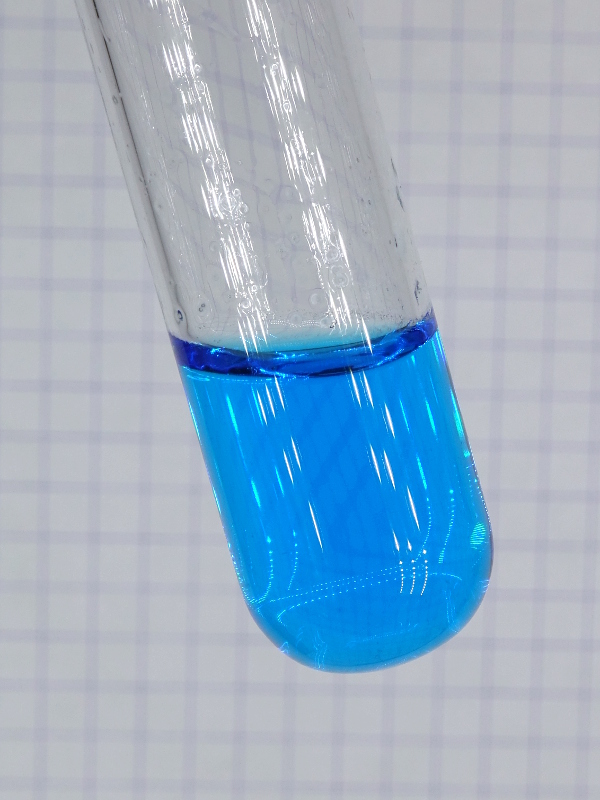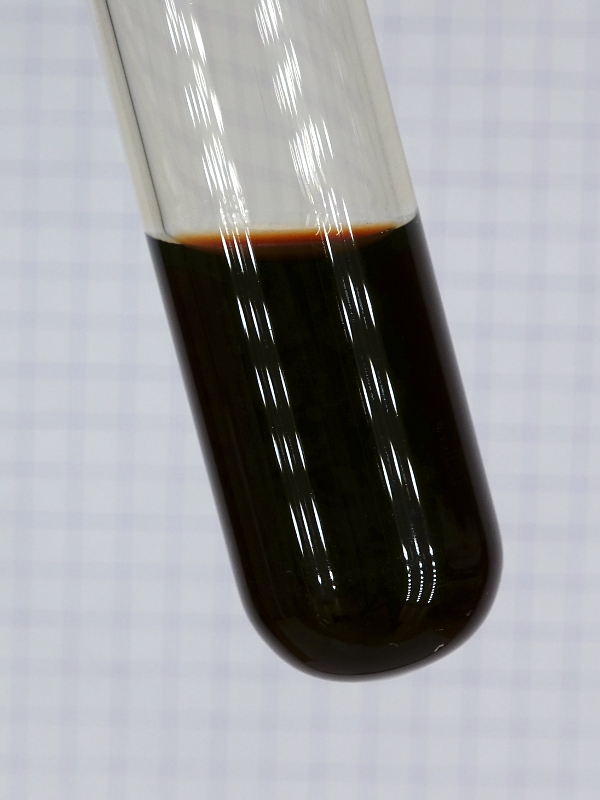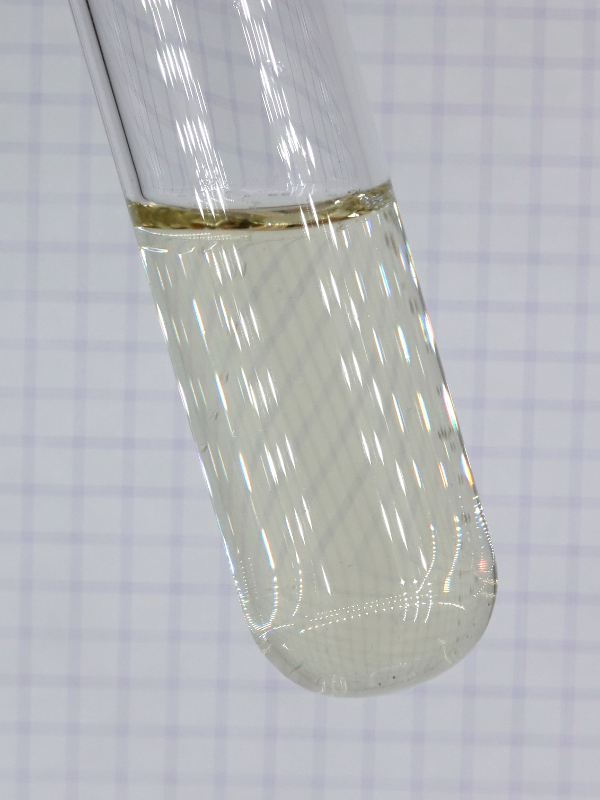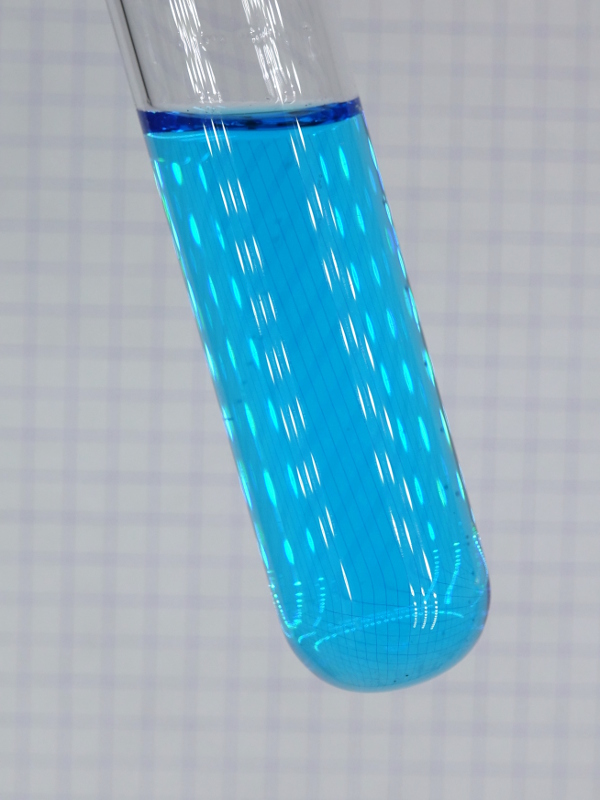


Hydroxylamine, both
oxidizer and reductor?
The result of this experiment is remarkable. Hydroxylamine, being a strong reductor, appears to oxidize vanadium(IV) to vanadium(V) in alkaline solution. Or is there another compound, which strongly resembles the well-known yellow color of vanadium(V) in acidic environments and the (almost) colorless appearance of vanadium(V) in alkaline environments?
![]()
Preparation of a vanadyl(IV)
solution
Add some dilute sulfuric acid to a
mixture of vanadium pentoxide and excess sodium sulfite
in a test tube and heat gently. When this is done, then
slowly all vanadium pentoxide dissolves and a clear
bright blue liquid is formed. After a pure blue color is
obtained, boil for a while, until no smell of SO2
can be observed anymore. The resulting liquid looks as
follows:

Add an excess amount of a solution of
NaOH, neutralizing all acid. When this is done, then
first a grey precipitate is formed, but on adding more
NaOH and swirling of the test tube, the liquid turns
dark brown and becomes clear. This is the color of
vanadate(IV) in alkaline solution, also known as
hypovanadate, V4O92-.

To this dark brown solution, add a large excess amount
of solid hydroxylamine sulfate and swirl in order to
dissolve all of it. Heat the liquid. At first, the
liquid becomes deep yellow and a little colorless gas is
produced. On prolonged gentle heating, the liquid
becomes lighter and lighter, until it is almost
colorless (very pale yellow). There is a faint smell of
ammonia (or is this the smell of free hydroxylamine,
liberated in the strongly alkaline environment?). During
the reaction, a lot of gas is evolved. However, when the
hydroxylamine sulfate was added to the brown liquid,
this was not yet the case. Apparently, the red/brown
hypovanadate is oxidized to an almost colorless
vanadium(V) compound. This is the final result after
prolonged heating:

Add an excess amount of dilute
sulfuric acid to the still warm liquid: The liquid
becomes yellow transiently, however, within a few
seconds this color shifts to green/blue and a little
later, the liquid is almost purely blue. Finally, the
liquid becomes purely blue, like the starting liquid,
albeit a little more dilute.
Apparently, the nearly colorless alkaline vanadium(V) is
transformed into yellow orange vanadium(V) on
acidification (which is as expected), which then is
reduced by the excess hydroxylammonium-ions in the
acidic solution. The addition of the acid is shown in a
video.
The video shows the reaction in real time. It
demonstrates that the reaction is quite fast. After this
reaction a bright blue liquid is obtained, showing the
pure color of vanadyl ion:
